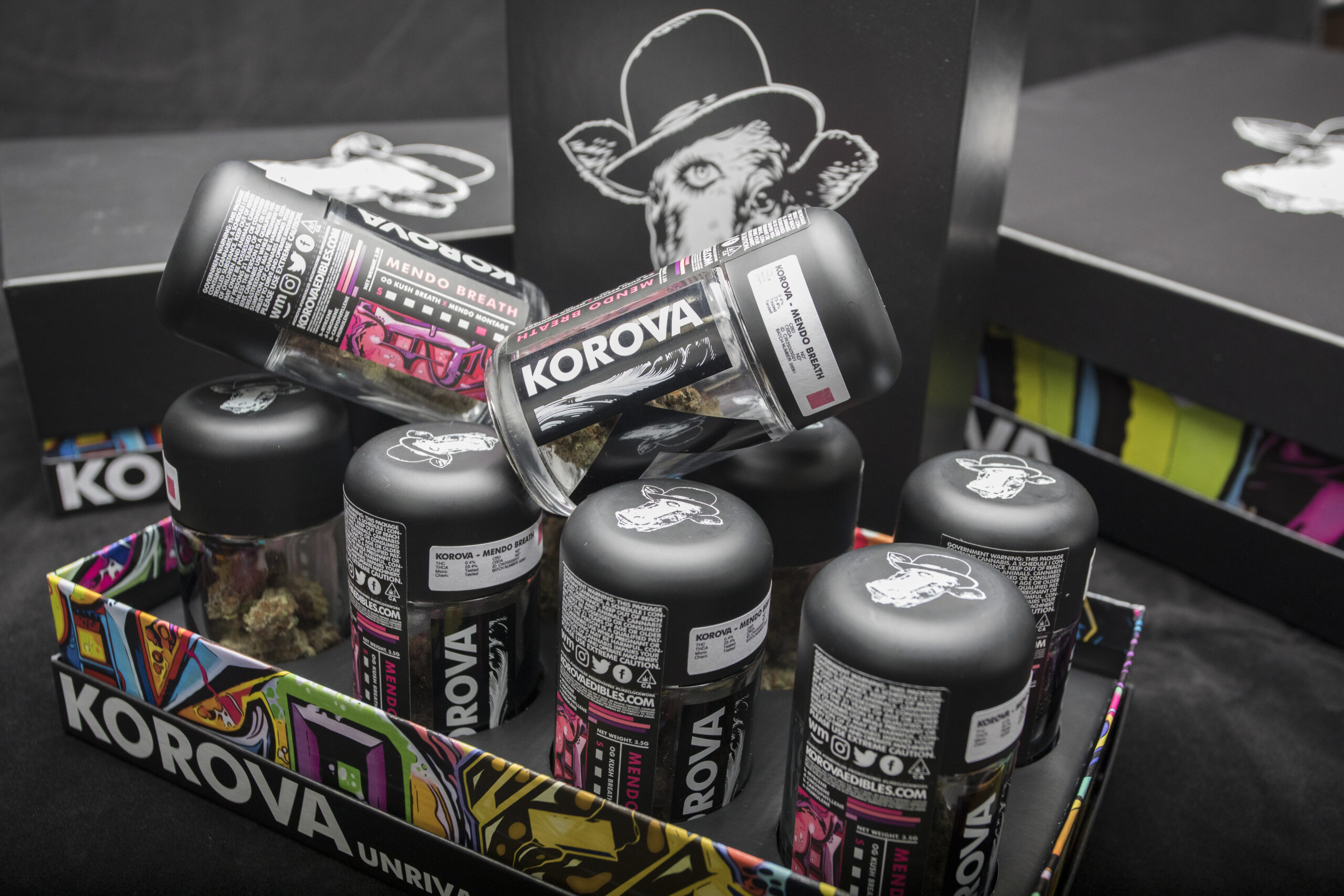The Cannabis Branding, Packaging and Retail Strategy series – CHAPTER 5
It’s important to understand the legal requirements for cannabis packaging and labeling, but also to learn how to creatively navigate these regulations. Since cannabis isn’t federally legal, you’ll have complications to navigate when protecting your brand and trademark. Let’s explore some innovative ways to incorporate compliance elements while maintaining a consistent, attractive and protectable brand.
Cannabis is one of the most highly regulated products in the U.S. and sometimes it seems like each state’s regulators are trying to make things especially difficult for us. In order to keep your products on the shelves and keep from putting your retail partners at risk, you’ll need to comply with your specific regulations to keep from getting hassled by state regulators.

Here are four guidelines to keeping your brand compliant while not losing your unique creative aesthetic.
Each state has different regulations, so we’ll keep this relatively general:
- Learn your state’s regulations.
- For every state comes a difficult to understand list of complicated regulations that you are expected to follow. If you don’t have the mind of an attorney or politician, they can be difficult to translate—especially during a creative process. If you’re not the type to dive into these rules, find someone who can help. There are plenty of compliance specialists out there that can save you expensive attorney fees.
- Make every millimeter count.
- As you design your product labels and packaging, treat every small area like the valuable gold it is, especially with the smaller form factors like single pre-rolls and concentrates. Plan out the structure of your packaging in different sections and make the most of them.
- Here are some of the common areas to consider:
- Front facing area of the packaging: This is your most valuable area for creative branding and design. Your brand should be large and recognizable. This is your best place to make an impression with color, design and imagery. Generally this area is required to include specific compliant items like product contents and net weight. These can be added to the bottom of the front area. Just make sure you use the specific font size that your state regulations require. You’ll also need to decide where to place your state’s un-appealing cannabis symbol on the front. Not much can be done to make these look attractive. Find a place to put it and make sure you follow the size and color guidelines. Unfortunately you won’t be able to change colors or reverse the contrast on this icon.
- Back of the packaging: This is a good opportunity to squeeze in some of your brand messaging, commitment to quality and descriptive content about the products contained inside. Take this opportunity to educate your consumer to learn about your authenticity.
- Sides of the packaging: No matter how you cut it, these areas aren’t pretty. These are good areas to put your Total Active Cannabinoids (TAC) label, potency, lab results and batch information. Each state has unique requirements for the TAC labels. The second side of the label should include the required health warning copy that your state provides. Don’t get creative with this copy. It must be the exact words and exact font size that your state requires.
- Top of the packaging: Generally this is a great branding opportunity. A big bold logo on the top can leave a lasting impression and tends to get a lot of exposure throughout the product life cycle.
- Break seal: Cannabis packaging often requires a break seal label that goes over the box opening or between the lid and the jar to show if it’s been opened. The break seal is a great opportunity to add additional information to your packaging. My recommendation is that you use this as an affordable place to add varying information like your products strain, terpene profile or flavor.
- Secondary packaging: You may have the opportunity to create a second layer to your packaging by placing your product in an exterior box. This can allow you the much-needed real estate you need to present your brand and messaging. Check your local compliance regulations to learn what content must be included on the primary packaging versus the secondary packaging. Depending on your state, this may lend you some creative freedom. Keep in mind that secondary packaging can be expensive and increase your Cost of Goods Sold and lower your margin on each product. Make sure you have enough margin in your product markup to include secondary packaging while keeping your price competitive and profitable.
- Trademark vs. Trade Dress:
- Trademarking your cannabis brand can be seemingly impossible as cannabis is not yet federally legal. Don’t let this dissuade you doing what you can to create a protectable brand. As national expansion continues, it’s vitally important that you create a brand that will not get sued by a similar brand that can prove they’ve been using the name or mark longer than you. This can be devastating after you’ve made your investment on branding and packaging. Keep in mind, however, that a trademark isn’t necessarily there to protect you, the brand. It exists to protect the consumers. Consumers have the right to know that every time they consume a product with your name, logo and visual design, they can expect the same quality and standards that your brand represents. This is ultimately a good thing that puts your customers first.
- Your trade “mark” is your name and logo that identify your brand and products. Your trade “dress” is the accompanying colors, patterns, designs and visual imagery that are synonymous with your brand. These elements are equally important to creating a visual experience for your customer that is consistent and appealing. Your brand is not just your logo—it’s the whole experience. Make sure you prioritize your trade dress consistency on your packaging, just as much as you do your mark.
- Child resistant packaging vs “stoner-proof” packaging:
- Some cannabis packaging seems like it requires a chainsaw to get it open! Child resistant packaging is an important component to being a responsible cannabis product, however some packaging is much better than others. You will leave a lasting negative impression on your consumer if their emotional experience of purchasing your product quickly goes from delight to frustration. Additionally, consider that not every consumer has strong hands or dexterity. Sometimes it’s impossible for the elderly to simply open a pop-top pre-roll tube. Make sure your packaging is certified child resistant, includes clear instructions of how to open them and aren’t impossibly difficult to open.
Chapter 6
Packaging Materials and Sustainability
The Cannabis Branding, Packaging and Retail Strategy series
Written by
